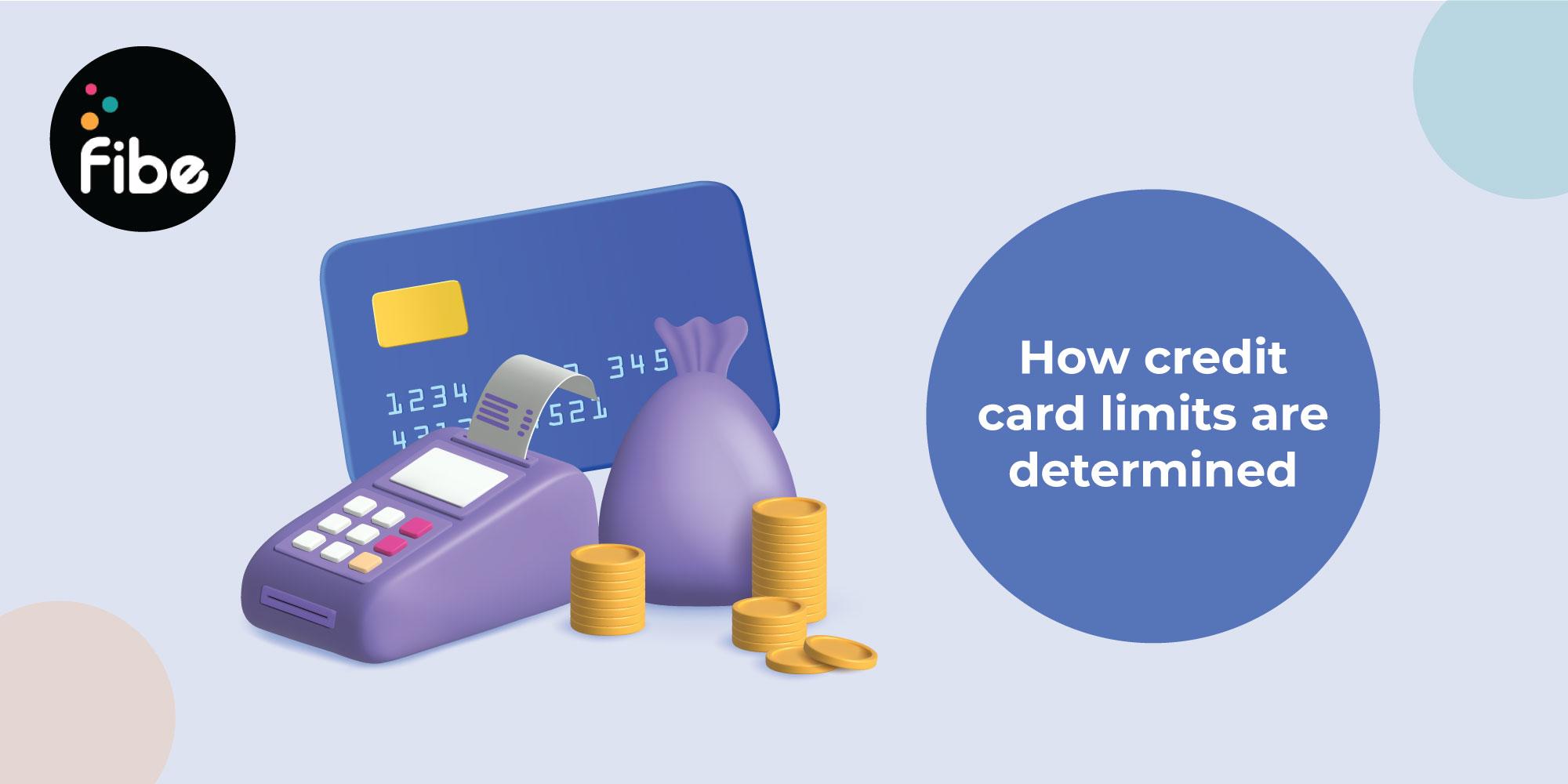- Home
- Blogs
- Credit Card
- How Credit Card Limit Is Determined
How Credit Card Limit is Determine & Tips to Increase Credit Limit
Reviewed by: Fibe Research Team
- Updated on: 29 May 2025
Reviewed by: Fibe Research Team

Want to know how banks decide your credit card limit and why it may differ from someone else’s? Your credit card limit depends on things like your income, credit score, repayment history and existing debts. Banks use these to check how much credit you can manage safely. So if your limit feels low, there are ways to increase it over time.
Read on to understand how credit limits are set and what steps you can take to get a higher one.
The credit limit is the maximum amount you can spend on your credit card in a billing cycle. The card issuer sets this limit after checking your credit profile, income and repayment history. Each card has a fixed monthly limit. You can use the card for purchases or payments only up to that limit. Once you reach it, new transactions will be declined until you repay the dues.
When you pay your bill in full, your credit limit is restored. But if you cross the limit, it can affect your credit score negatively. It can even lead to higher charges on the outstanding amount.
While a calculator that calculates your exact credit card limit is still a work in progress, you can do minimal calculations to get an estimate.
Step 1: Check your credit score
Firstly, check your credit score. A score above 750 improves your chances of approval.
Step 2: Aim higher for better limits
The closer your score is to 900, the higher your chances of getting a better credit limit.
Step 3: Calculate your debt-to-income ratio
Divide your total monthly debt by your net monthly income to get this ratio.
Step 4: Keep the ratio low
A lower debt-to-income ratio shows good repayment capacity. It can help you qualify for a higher limit.
These steps can help you get a fair idea of what credit limit you might receive.
Apply For Instant Cash Loan Online
Credit card issuers look at a few key factors before setting your credit limit. Here’s what they consider:
Your monthly and yearly income play a big role. Issuers also look at how stable your job is, how long you’ve been with your company and the type of job you have. A full-time, long-term job in a reputed company usually improves your chances of a higher limit.
How you use your money matters. If you pay bills on time and don’t overspend, you’re seen as responsible. But if you regularly use up your entire limit, banks may perceive this negatively.
This compares your monthly debt to your income. A high ratio means less room for new credit. Issuers may lower your limit if they feel repayment could be tough. You can improve your ratio by reducing debts, increasing repayments and avoiding new loans.
Issuers also check how much debt you already have. If you’re juggling multiple loans or cards, they may give you a lower limit. Keeping your dues low and credit usage under control shows you can handle more credit.
Paying your full dues on time boosts your credit image. If you have a clean repayment history, issuers are more likely to offer a higher limit when you request one or when your income grows.
Also Read: Learn To Use Credit Card Responsibly
Here are some simple ways to increase your credit card limit over time:
Apply For Instant Personal Loan
Your credit score plays a critical role in determining your credit card limit. Here’s how:
1. Higher Score = Higher Limit
A strong credit score (typically 750+) signals to the bank or lender that you’re a reliable borrower. This often results in:
2. Moderate Score = Moderate Limit
If your score falls between 650–749:
3. Low Score = Low or No Limit
A score below 650 might lead to:
You can check your credit card limit quickly by calling customer care and following the IVR instructions. You can even visit your nearest bank branch to ask directly. Here’s how you can do it online:
Choose the Fibe Axis Bank Credit Card to enjoy a high credit limit as per your eligibility. As India’s first numberless credit card, it offers a host of benefits ranging from complimentary access to domestic airport lounges to cashback of up to 3%. You can also link this RuPay card to your UPI and complete transactions without any hassles.
Download the Fibe App or register on our website to apply online for this lifetime-free credit card!
Issuers calculate credit card limits through different methods. It’s generally 2 – 3 times your current monthly income. If your salary is ₹40,000, your credit limit may be between ₹80,000 to ₹1.2 lakhs.
The maximum limit in India for a salary of ₹50,000 usually goes up to ₹1.5 lakhs if the issuer uses the 3X calculation. However, this also depends on your:
The minimum and maximum limit on a ₹30,000 monthly salary is based on a variety of factors. However, the minimum credit card limit in India is 2 times your monthly income and the maximum can be 3 times. This comes to a credit limit between ₹60,000 and ₹90,000.
It starts from ₹50,000 and extends up to ₹75,000 if the card issuers use the 2X-3X method of calculation.
If a person has a salary of ₹18,000, the credit card limit they can enjoy may range between ₹36,000 and ₹54,000, i.e., 2X to 3X of their monthly salary.
The minimum credit card limit in India is generally 2 times your monthly income, and it can go up to 3 times.
In India, the minimum credit limit is usually twice your monthly salary. However, it also depends on your creditworthiness, existing debt and income.